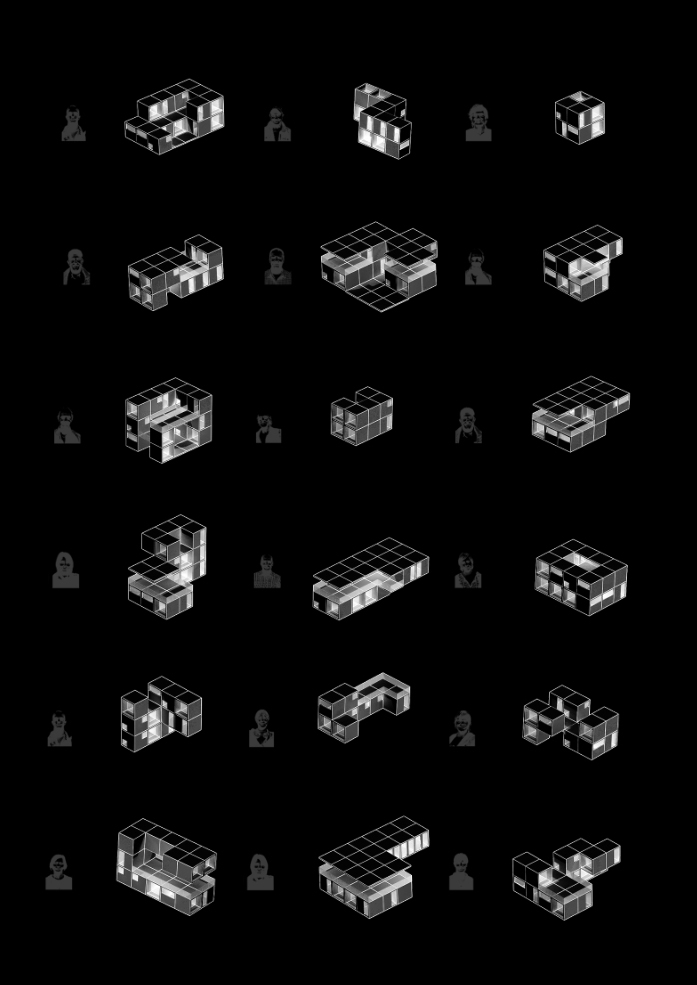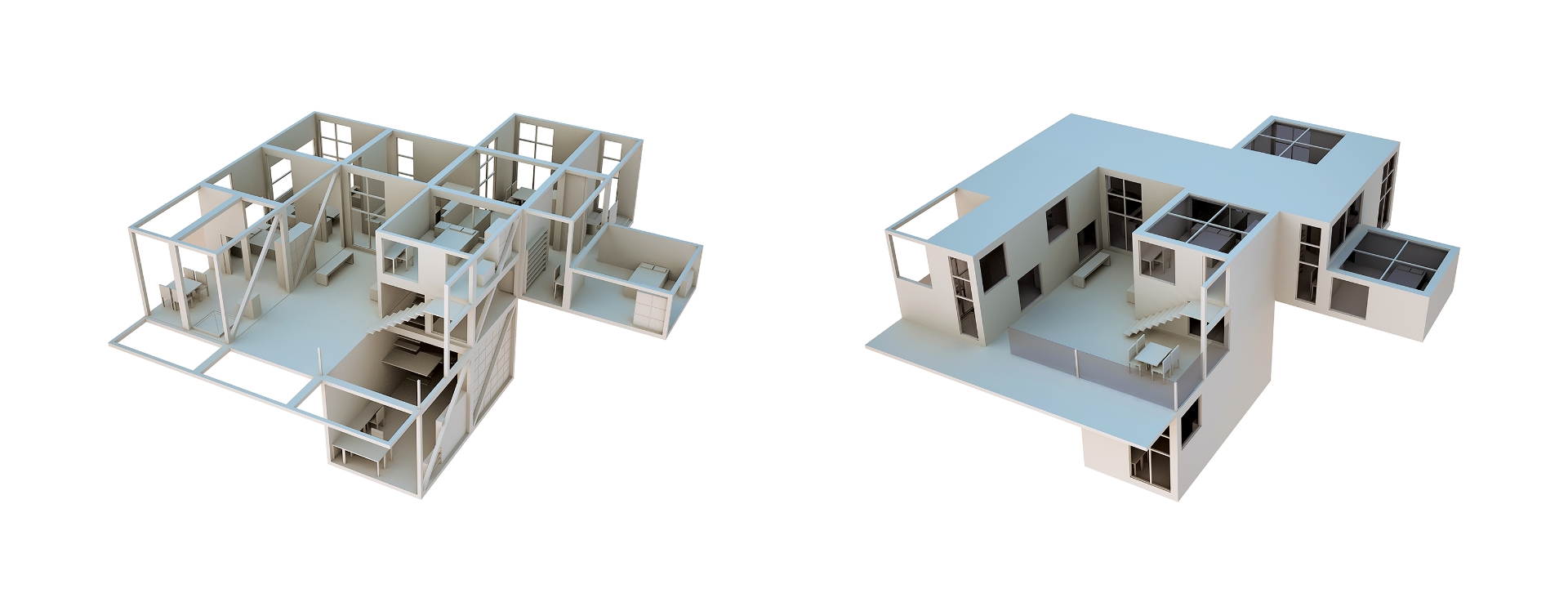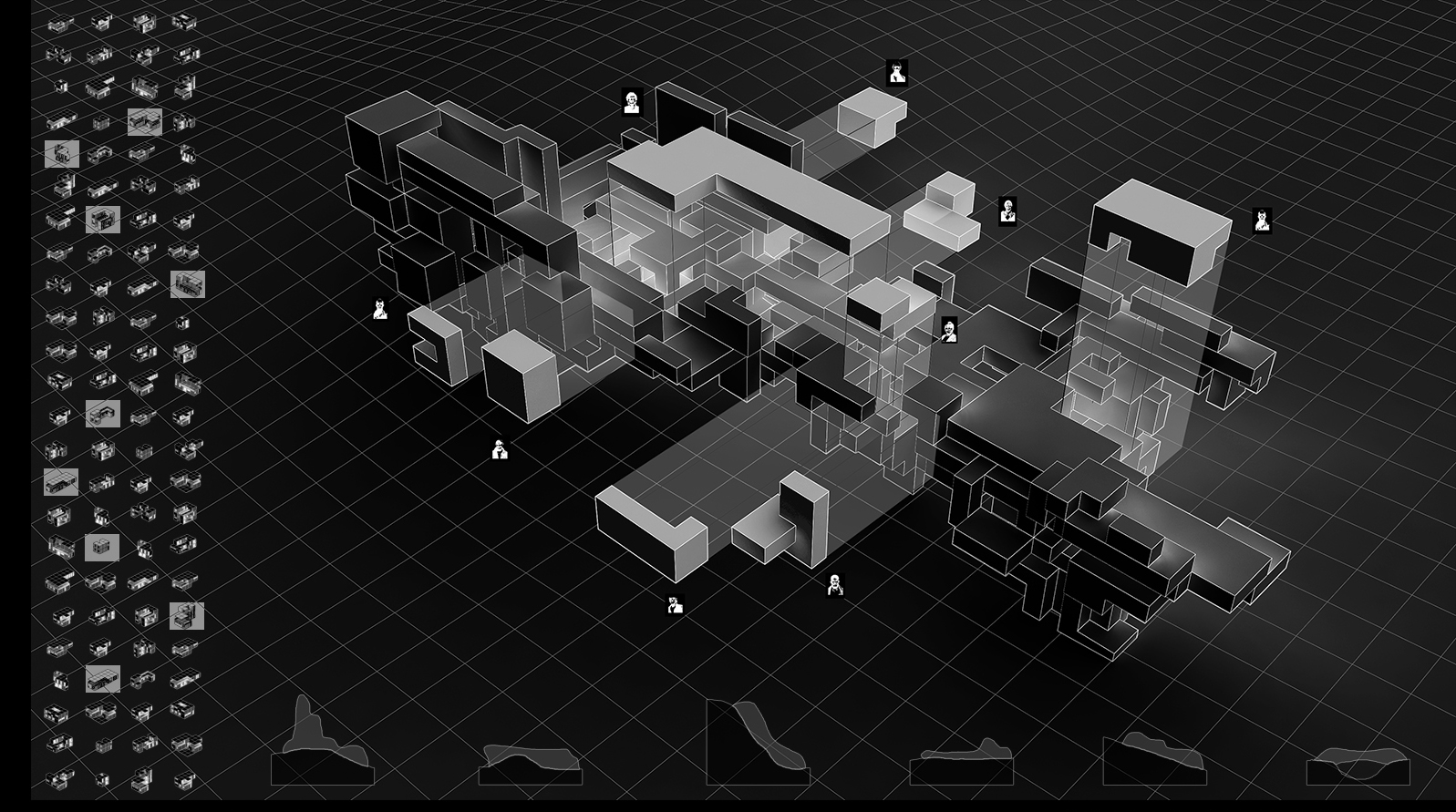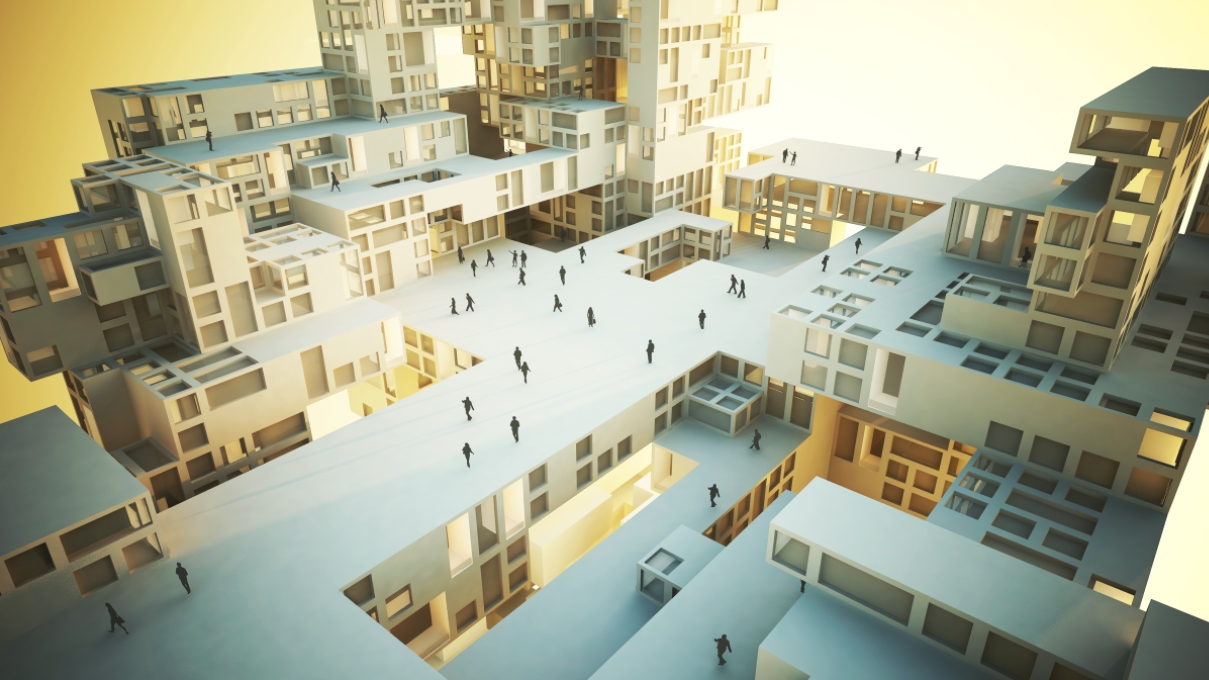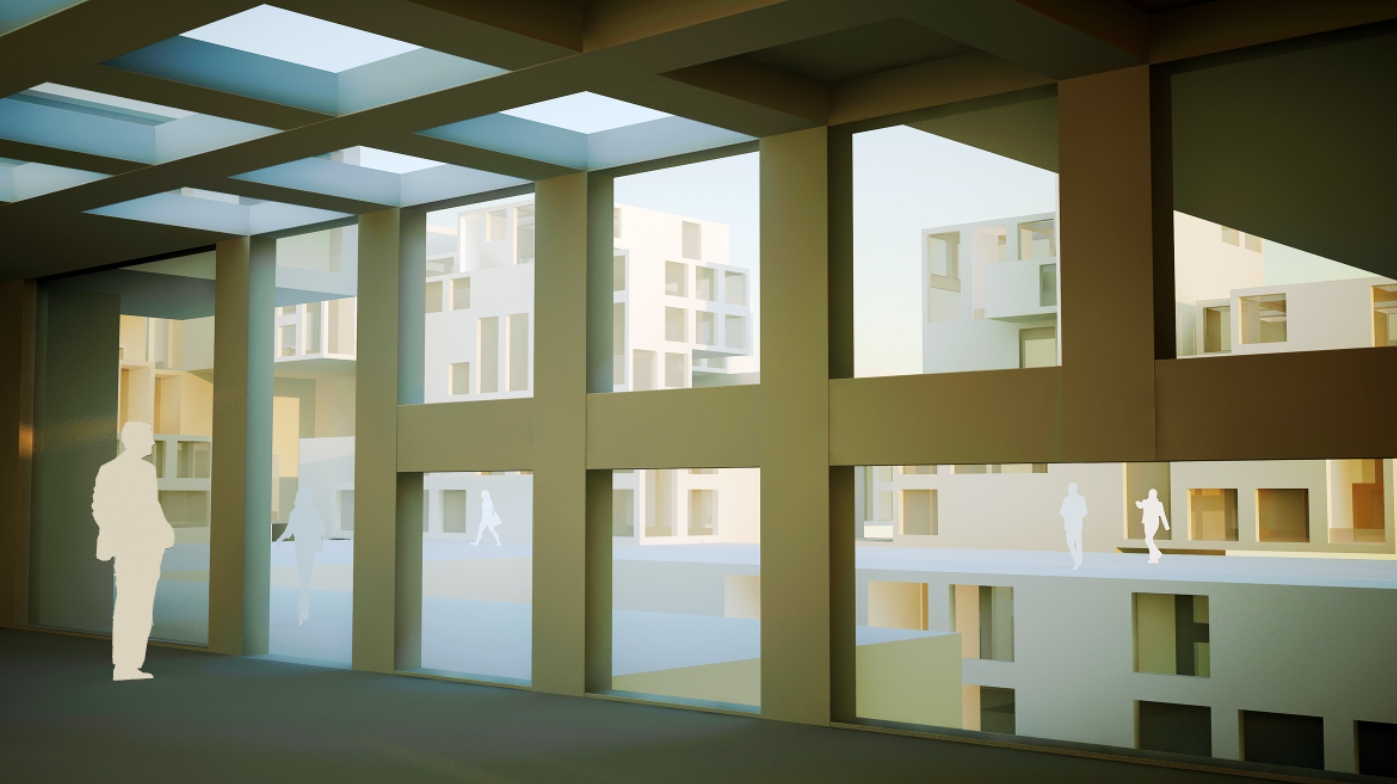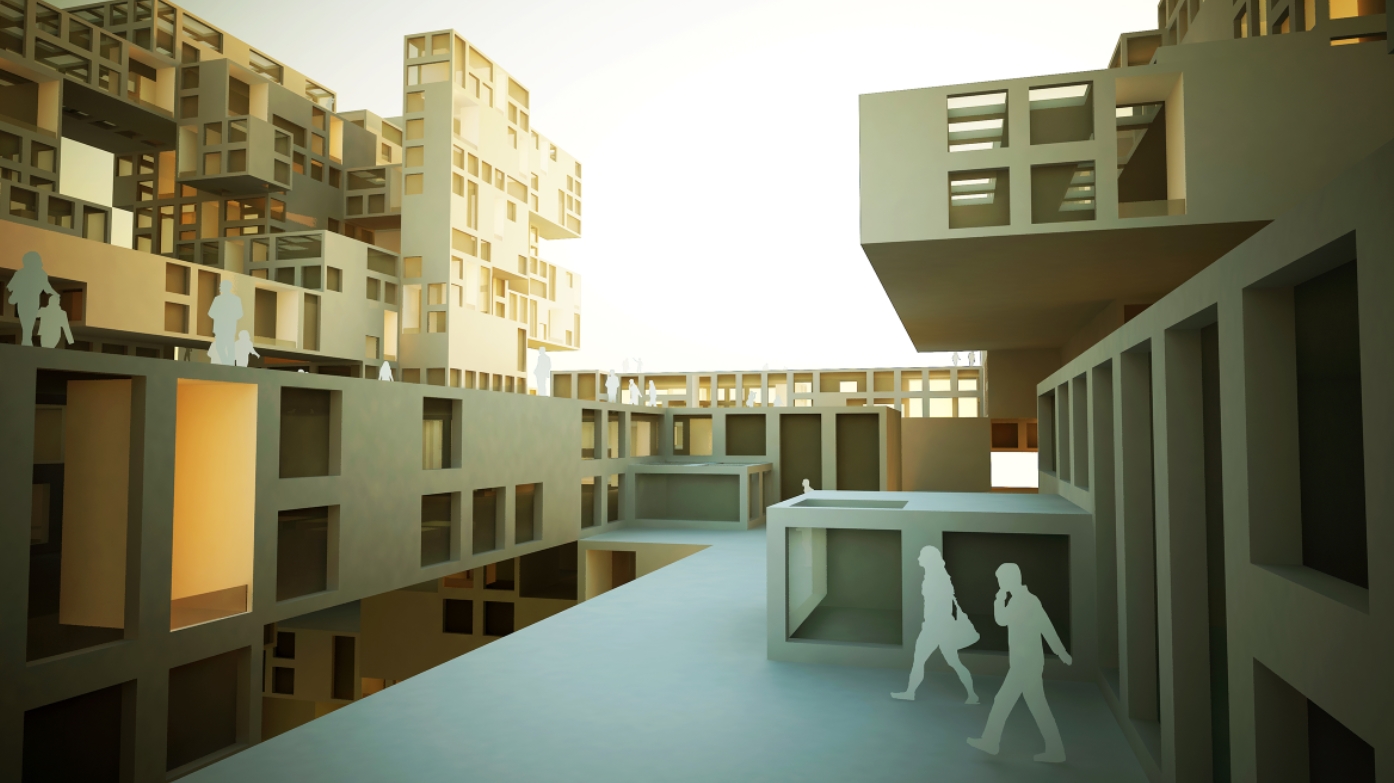Modular Public Housing
- Architecture project
- Academic work: 2011, Istanbul
This project aims to illustrate an alternative architectural design method. This method includes a digital platform that can facilitate cooperation between prospective inhabitants and the architect. Briefly, the process looks like this:
The architect defines core parameters, main principles, and urban-scale limitations.
Prospective inhabitants open up their client-side software and digitally build their ideal house.
The system uses all the house models and optimizes them to generate the final building model.
Initial Questions
The architect is often acting as the dominant figure when it comes to the design of a building. Users often have no choice but to accept the result rather than take an active role in the design process. Can we create a system where both the architect and prospective users can combine intelligence to shape the final building?
Can we use the power of generative algorithms to create highly optimized yet individualized buildings?
Can this become a software platform for the architecture industry?
Process
The architect defines core parameters, main principles, and urban-scale limitations.
The rules include:
The way the individual units should come together
The overall enclosing geometry
Height
Density
Perforation
Acoustics
Airflow
Structural behavior
Thermal efficiency
Required sun exposure
Rules will range from pragmatic aspects such as heat efficiency and alignment of plumbing to more abstract aspects such as privacy and the characteristics of public spaces.
2. Prospective inhabitants will build their individual units through a graphical user interface. In this phase, users will reflect their own preferences to the digital model. The experience will be similar to combining Lego bricks or playing Minecraft.
3. Once the individual units submitted to the architect, an evolutionary optimization algorithm will simulate thousands of possible assembly models and gradually generate the structure. The algorithm will provide the most optimized form based on all the defined rules.
Similar to most nature-based emergent phenomena, this system produces high-level visual complexity and geometrical articulation based on simple and pragmatic principles.

